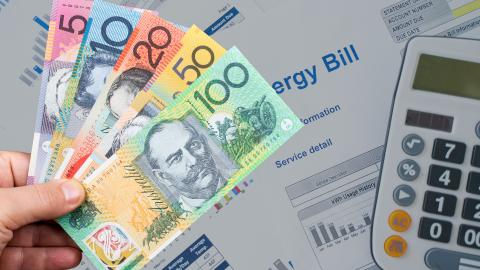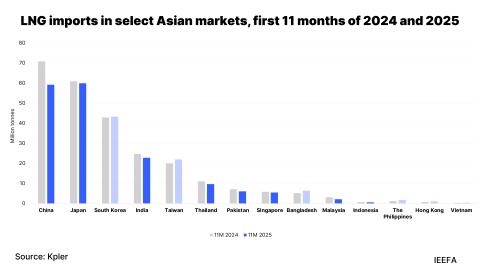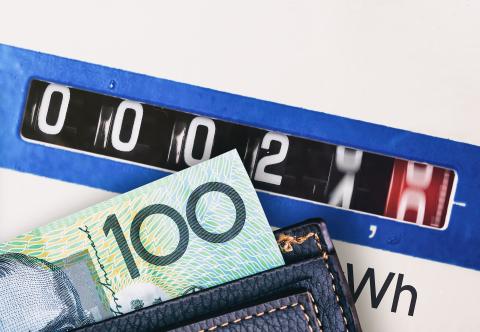SFDR 2.0: Making labels work for the consumer

Key Findings
IEEFA welcomes European Commission plans to introduce an official product labelling system under the Sustainable Finance Disclosure Regulation (SFDR) but warns that each label must now be grounded in clear, centrally set minimum standards that are calibrated to avoid stifling product innovation.
Removing entity-level principal adverse impact reporting eases operational burdens for asset managers but risks weakening consumer protections unless replaced by a concise disclosure layer aligned with the Corporate Sustainability Reporting Directive.
Because the proposed labelled fund universe will likely be smaller than today’s Article 8 and 9 categories, SFDR 2.0 risks sharply reducing market transparency if it does not introduce slim mandatory baseline disclosures for all funds.
As SFDR’s success ultimately hinges on whether it helps consumers understand where their money is invested, regulators must road-test new labels with retail investors. This is especially important for fossil fuel guardrails, which remain a key credibility test.
The EU Sustainable Finance Disclosure Regulation (SFDR) has been working two jobs. Neither particularly well. If proposed reforms are anything to go by, the European Commission now agrees.
Originally designed to standardise sustainability disclosures, SFDR’s deliberately flexible framework granted asset managers broad discretion in defining a fund’s environmental or social ambition. Unsurprisingly, this led to significant inconsistencies across the regulation’s three categories: Article 6 funds with no sustainability focus, Article 8 funds that “promote” environmental or social characteristics, and Article 9 funds claiming a specific sustainability objective.
This was confusing for investors, particularly at the retail end of the market. But the problem escalated when market participants started using those self-determined article designations as shorthand for sustainability quality, effectively turning a disclosure regime into a de facto labelling system.
The European Commission now appears ready to make SFDR’s unintended function official. It has proposed replacing Articles 8 and 9 with three product categories, removing the definition of “sustainable investment” and scrapping entity-level principal adverse impact (PAI) reporting.
The three new product labels will broadly align with the recommendations previously put forward by the EU Platform on Sustainable Finance, with final label names to be determined after consumer testing.
Each label requires at least 70% of the portfolio to align with the stated sustainability or transition strategy. The remaining 30% is reserved for diversification, hedging and liquidity, provided it does not contradict the label. The package amounts to a significant simplification, but its effectiveness will hinge on the clarity and enforceability of the new framework.
The “sustainable investment” definition is not needed
The problem of defining “sustainable investment” has been a long-standing source of inconsistency under SFDR. With asset managers marking their own homework, some inevitably pushed the envelope. That some managers used the flexibility of SFDR 1.0 to allow fossil fuel developers into Article 9 funds is perhaps the most conspicuous example.
Deleting the definition sounds dramatic, but it is the policy equivalent of kicking the can down the road. The argument goes that it is not needed anymore because clarity will come from the new product labels themselves. In practice, much of that clarity will live or die in the upcoming delegated acts, where the Commission will need to translate the label concepts into tight, enforceable criteria.
If the labels are faithful to the recommendations made by the EU Platform on Sustainable Finance, the labels should be clear, precise and underpinned by centrally decided minimum standards. In this case, trust and usability should improve. No definition is required because the label guardrails are definition enough. But balance here is key. Should the standards be too prescriptive or stringent, innovation stalls and the number of funds able to qualify for a label will shrink to the point of undermining the entire exercise. Too loose, and one grey area is traded for three shiny new ones.
Entity-level PAIs: Pain points versus a visibility gap
The proposal scraps entity-level PAI reporting, which addresses real operational pain. Data gaps, inconsistent methodologies and unwieldy templates have inflated compliance costs for reporting that has limited comparability. The gripes are valid, but removing entity-level reporting entirely erases visibility where it matters most for consumers. Institutional clients may focus on individual funds, but ordinary savers choose asset managers as a long-term steward of their wealth, not just individual products. Ordinary savers cannot reasonably be expected to evaluate the sustainability profile of every fund their money ends up in.
Admittedly, much of this can be solved through alignment with the EU’s Corporate Sustainability Reporting Directive (CSRD), which already covers parts of the necessary dataset. SFDR should build on that foundation, not abandon it, by replacing today’s sprawl with a concise, standardised set of indicators linking firm behaviour to product claims. These could include metrics such as:
- The share of assets held in labelled versus unlabelled products
- Entity-level exposure to fossil fuel developers
- Voting patterns on climate and social resolutions
- The proportion of assets held that are backed by credible transition plans
A streamlined supplement under SFDR would keep reporting proportionate while preserving essential transparency.
Fossil fuel expansion and label integrity
Under SFDR 1.0, fossil fuel developers sit comfortably inside Article 8 and even appear in the stricter Article 9. This is technically permissible, but it undermines trust. A retail investor reasonably assumes that ticking a “sustainable” box means their pension is not financing fossil fuel expansion. How SFDR 2.0 treats fossil fuels will therefore be an early test of credibility.
Under the proposal, all three labels share a common floor of exclusions covering hard coal and lignite, controversial weapons, tobacco, and severe norms violations. The sustainable and transition categories go further, excluding companies developing new coal, oil and gas projects or that lack a fossil fuel phase-out plan. These additional exclusions are a material tightening relative to SFDR 1.0.
The ESG basics category is less reassuring. Although the Commission’s narrative suggests the category should “avoid harmful investments”, it does not explicitly exclude fossil fuel developers beyond the baseline rules (unlike the sustainable and transition categories). According to the proposal, ESG basics products may rely on approaches such as best-in-class selection or excluding the worst ESG performers. Interpreted narrowly, this could allow fossil fuel developers that appear less harmful relative to peers to fall within scope. Yet consumers are unlikely to understand this nuance, nor to view such holdings as consistent with “avoiding harmful investments”.
The transparency cliff edge
Labels are a step forward, but there is a catch. Under the European Commission’s proposal, detailed sustainability disclosures and standardised templates apply only to labelled products, while uncategorised funds should refer to sustainability factors only on an ancillary basis. This is not far removed from the current system, which demands meaningful disclosure only from Articles 8 and 9. But with stricter criteria for label eligibility and explicit limits on what unlabelled products may disclose, asset owners could suddenly end up with far less decision-useful information than they have today.
Articles 8 and 9 cover around 50% of the EU retail fund universe by assets and 60% by number. Imperfect as that system is, its breadth provides visibility across most of the market. With no grandfathering, many managers may opt not to apply for new labels if the criteria are demanding or introduce legal risk. Caution alone might justify opting out. The number of funds that will be subject to meaningful sustainability disclosure is therefore almost certain to contract significantly.
A labelling regime without a mandatory baseline disclosure for all products therefore risks shrinking market transparency at the very moment that the labels themselves become more robust.
It will be important to watch how asset owners respond to this issue as the reforms take final shape. Early reactions from asset managers have been almost uniformly positive, particularly regarding the removal of entity-level PAI reporting and the shift toward a voluntary labelling regime. These changes reduce operational burdens and legal exposure for managers. Asset owners on the other hand have not yet been so vocal, and their priorities differ. They rely on consistent, comparable information across the entire product universe to assess long-term risks and fulfil their fiduciary duties. A disclosure framework that excludes large parts of the market may alleviate pressure on managers but risks significantly weakening the information environment that asset owners depend on.
How SFDR can deliver
If SFDR 2.0 is going to rebuild trust and improve usability, it needs to deliver clarity, comparability and credibility, while keeping the consumer ultimately at the core of policy. To that end, IEEFA views the following design principles as essential.
- Set clear, centrally defined minimum criteria
Delegated acts must give each category clear, enforceable guardrails and publicly available minimum thresholds. The labels themselves must do the work that the old “sustainable investment” definition could not, with interpretation taking place within that framework, not outside it. - Retain streamlined entity-level reporting aligned with CSRD
CSRD already covers much of the necessary dataset. SFDR should build on that with a short, standardised set of indicators linking firm-level practices to product-level claims. This gives consumers a view of the steward, not just the fund. - Preserve transparency across the entire market
Introduce a slim baseline disclosure requirement for all funds, not just labelled ones, reserving enhanced templates for labelled products. This maintains comparability and avoids shrinking the visibility investors currently have. - Make labels and guardrails consumer-proof
Labels will only work if regular savers understand them intuitively. Consumer testing should confirm that guardrails are clear in practice. This includes determining whether the ESG basics label needs an explicit exclusion for companies developing new fossil fuel reserves, to avoid misleading investors.
SFDR 2.0 does not need to be perfect; it just needs to be usable. Get the labels right, make the data comparable and give ordinary savers a fighting chance of knowing what their money supports. Everything else is just detail.















